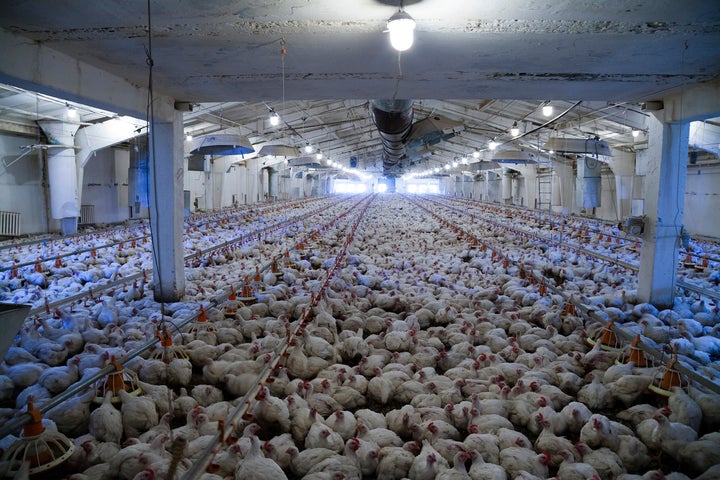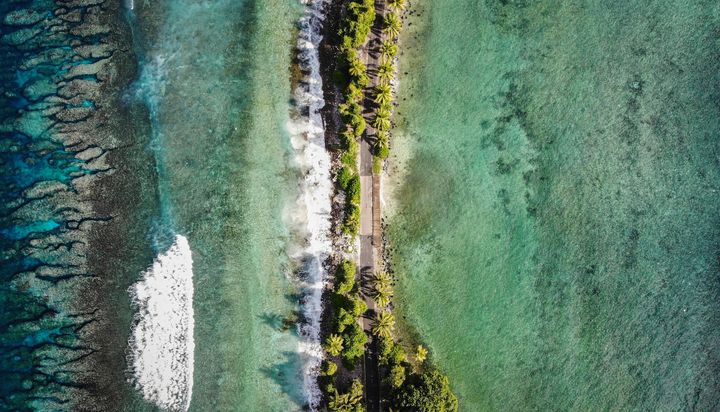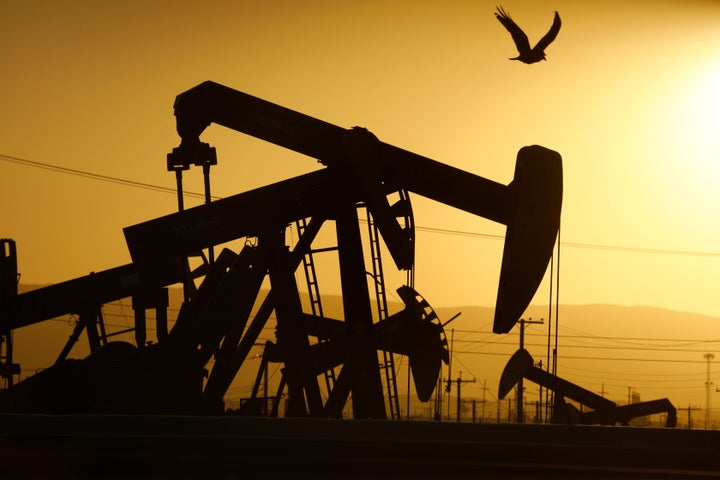This year was supposed to be the year for climate action. Landmark climate and environmental summits were scheduled. At the highest-profile of these, COP 26, countries were expected to agree on new and more stringent targets for keeping the world’s temperatures from rising above levels which would tip us over into catastrophic climate change.
As we all know, it didn’t quite work out like that. The pandemic arrived, postponing plans and pushing climate change to the sidelines politically. But while action stalled, the climate crisis raged: countries boiled, burned and flooded.
As we crawl out of 2020, a year that has brought people and economies to their knees, we look at five big environmental stories that could dominate in 2021.
1. The Biden Administration: Can The U.S. Be A Climate Leader?

The November presidential elections were a huge deal for climate action. Michael Mann, one of the most high-profile climate scientists, tweeted in March that a second term for Donald Trump would be “game over for the climate.”
It didn’t seem like hyperbole. In 2018 the Intergovernmental Panel on Climate Change (the IPCC) published a landmark report warning that having a realistic chance of tackling the climate crisis meant a 45% cut in global carbon emissions by 2030. This finding got simplified into the headline: “12 years left to save the planet.”
Two of those years unfolded under Donald Trump and saw the U.S. race backwards on climate action. His administration gutted environmental protections and pulled out of the Paris climate agreement. His anti-environmental push continues even as he prepares to leave office: In January, Trump plans to sell licenses to drill for gas and oil in the pristine Arctic National Wildlife Refuge.
The election of Joe Biden ― who announced a $2 trillion climate plan during his presidential campaign ― offers hope for a starkly different path. He has pledged to reenter the Paris agreement on his first day of office and has committed put the U.S. on a path to net zero emissions by 2050.
Biden is putting in place a climate team that includes Michael Regan, an environmental regulator with a strong record on environmental justice, as head of the Environmental Protection Agency. And he has nominated Rep. Deb Haaland (D-N.M.) as interior secretary, who would make history as the first Native American to serve as a Cabinet secretary. “I’ll be fierce for all of us, our planet, and all of our protected land,” Haaland tweeted when the nomination was announced.
UN chief Antonio Guterres has celebrated Biden’s win. “We look forward [to] a very active U.S. leadership in climate action from now on,” he said. “The United States is the largest economy in the world, it’s absolutely essential for our goals to be reached.”
But it will still be an uphill climb, especially if the January runoff elections in Georgia are won by Republicans. That would seal at least two more years of a Republican-controlled Senate ― helmed by climate obstructionist Mitch McConnell (R-Ky.) ― with the power to prevent climate legislation.
Biden does have other routes to action. He may roll environmental measures into an economic stimulus package when he takes office. He will also be able to sidestep Congress and use his executive power to implement climate measures ― for example, on emissions and clean air and water.
“It’s unlikely for Biden to get the kind of massive comprehensive climate law that many of us have been seeking for a long time,” Michael Gerrard, director of the Sabin Center for Climate Change Law at Columbia University, told Wired. “A great deal can be done by a combination of federal action under existing authority, state and local action, and private action. Whether it will be enough is a difficult question.”
2. Factory Farming: The Quest To Make Our Meat More Humane

The meat industry is wrapped in suffering ― but it’s something we tend not to see, or at least choose not to see. For many people, particularly in wealthy nations, meat is simply what we buy wrapped neatly in plastic at the grocery store. We haven’t had to think too hard about where it comes from. But that’s changing as people realize the huge climate, animal and human costs.
Dominated by a handful of huge agri-businesses, the industry is geared around keeping costs low: animals are packed tightly into polluting factory farms, which provide more than 90% of the meat eaten globally. For most of them, it’s a short life of suffering: some are bred to be so large they are constantly in pain, most don’t have access to the outside. To combat disease in overcrowded farms, they are pumped with antibiotics, which contributes to the spread of antibiotic resistance.
The human costs are high, too. Factory farms also pollute the communities they are situated within, disproportionately communities of color, and have a huge climate footprint.
The coronavirus pandemic added a terrifying new dimension to the human health toll of factory farming — one that may help push more people to realize the devastating costs of our current meat industry. In meatpacking facilities, workers labor elbow to elbow in conditions which have proved ideal for the spread of COVID-19. So far more than 51,000 meatpacking workers have been infected, and 262 have died.
Fortunately, it’s easier than ever to reduce or cut meat from our diets, thanks to the rise of an increasingly sophisticated meatless meat industry. Products like Beyond Meat’s “bleeding” vegan burger offer a good dupe for meat lovers. Sales of plant-based foods intended as direct meat replacements have grown by 29% since 2017, to $5 billion.
At the more sci-fi-sounding end of the spectrum, no-kill meat ― that is, meat grown from cells in a bioreactor, without the need to kill any animals ― has also seen a boost this year. Singapore became the first country in the world to approve it for sale to consumers. The hope is that lab-grown meat might persuade even diehard carnivores to cut down their meat consumption.
It’s a huge thing. If we can find a way to slash emissions from livestock farming, which currently make up 14.5% of all human-caused greenhouse gas emissions, it would be an enormous step in the fight against catastrophic climate change.
3. Oceans: A Problem Too Big To Keep Ignoring

Our oceans are in a very bad way, but often overlooked when it comes to climate discussion and climate policy.
They are choked by plastic pollution ― made even worse during the pandemic by the haphazard disposal of single-use masks and other PPE ― which damages ocean life and leaches into human food.
They’re also getting hotter. Oceans act as a vital buffer against climate change, slowing the impacts by absorbing heat and emissions. But this comes at a huge price. Ocean ecosystems are suffering: Marine life is dying, fish are migrating to seek cooler waters and coral reefs are seeing mass bleaching events. Warmer oceans also lead to more devastating hurricanes ― which absorb more moisture, helping them to last longer over land.
The damage to oceans affects food security ― around 3.2 billion people depend on seafood for about 20% of their protein intake. And as temperatures increase and ice melts, rising sea levels threaten to be catastrophic: Up to 340 million people live on land that’s predicted to experience an annual flood event by 2050. As with every crisis, it will hit the poorest and most marginalized first.
The situation may be dire, and some of the damage locked in, but there is still plenty that can be done to limit to impact of the climate crisis on our oceans.
We have the solutions. Restoring ecosystems like mangroves and sea grasses can boost marine ecosystems and suck up carbon, which helps offset emissions. Tackling unregulated fishing and scaling up more sustainable seafood industries as well as seaweed farming would help protect marine life and also provide jobs. And oceans can provide us power — through offshore wind and tidal power.
In December, 14 nations, including Canada, Norway, Australia, Mexico and Kenya, signed a commitment to sustainably manage 11.5 million square miles of their national waters. “Humanity’s well-being is deeply intertwined with the health of the ocean,” Erna Solberg, the prime minister of Norway, said in a December statement to mark the pledge. “For too long, we have perceived a false choice between ocean protection and production. No longer.”
4. Extinctions: The Race To Save Biodiversity

Around 30% of animal and plant species are at risk of extinction, according to the Red List released in December, an inventory of threatened species maintained by the International Union for Conservation of Nature (IUCN).
The list includes all of the world’s freshwater dolphins, which are threatened by fishing methods, dams and pollution. It also features oak trees, which are falling victim to land clearance for agriculture and logging in addition to the impacts of invasive species and climate change.
The IUCN declared that at least 31 species are newly extinct ― including three frog species and 15 freshwater fish species.
Evidence has been mounting of the devastating impact human activities are having on nature. A 2019 report from the UN’s expert panel on nature, the Intergovernmental Science-Policy Platform on Biodiversity and Ecosystem Services, found that up to 1 million land and marine species could be made extinct by human actions if current trends continue.
And we only need to look at the pandemic to understand one of the ways the destruction of biodiversity harms humanity. As humans push further into nature ― by chopping down trees and forcing animals from their habitats ― the chances of diseases jumping from animals to humans becomes more likely.
A landmark UN biodiversity conference, postponed in 2020 because of the pandemic, will now take place in May 2021. The hope is that countries they will lay out meaningful pledges to enact systemic change to stem a catastrophic loss of nature. Because there is no time left.
“The coming year is crucial for biodiversity,” Kai Chan, professor at the Institute for Resources, Environment and Sustainability at the University of British Columbia told HuffPost. “What’s needed in 2021 is for nations to take aggressive action towards transformative change that addresses the linked needs of people and nature.”
5. Fossil Fuel Companies: Campaigns To Strip Them Of Legitimacy

Oil and gas companies know they are on shaky ground. They have known about fossil fuels’ impact on climate change for decades and still pumped billions of dollars into undermining climate action and promoting climate denial.
Explicit climate denial may no longer be politically or socially acceptable in 2020, but oil and gas companies are still pumping money into trying to bend the climate conversation to their will. They are trying to reposition themselves as part of the solution and as leaders in climate action, all the while urging caution in the speed with which we transition to a low-carbon economy.
Natural gas, with its potent methane emissions, is being sold as a vital part of the transition to a decarbonized economy, huge claims are made about the power of clean technologies (most of which are totally unproven at scale), and companies are leaning hard into the tired old myth that individual action is the key to tackling climate change. In November, Shell tweeted out a climate poll asking people what they were doing to cut their climate footprint. The backlash was swift and biting.
But these slick messages are being beamed to an increasingly skeptical audience. Despite deep political inaction on climate change at a federal level, the majority of Americans are actually in favor of stronger action.
Activists and campaigners are using every tool to fight the fossil fuel industry, and the noise they are making is getting louder.
Climate writer Mary Annaïse Heglar endorses what she calls “greentrolling” ― “trolling the shit out of fossil fuel companies” on social media. She’s urging people to channel their anger into bullying oil and gas companies online.
Others are targeting the industries that support oil and gas. A campaign called Clean Creatives is shaming PR firms into stopping work that helps prop up the fossil fuel industry.
The banks and investors that pump money into fossil fuels are also under the spotlight. Campaigns to pressure financial institutions to stop funding new fossil fuel projects are gaining momentum and having big successes. Huge banks have ruled out financing Arctic drilling.
The endgame of these actions is to strip fossil fuel companies of their legitimacy, to dent what they value most right now: Their social license to operate.
“For the longest time, it’s just been this faceless fight” against climate change, Heglar told HuffPost. Now, “people know who the villain in the story is.”
CORRECTION: This article previously misstated that the Sabin Center is affiliated with New York University; it is affiliated with Columbia University.
HuffPost’s “Work In Progress” series focuses on the impact of business on society and the environment and is funded by Porticus. It is part of the “This New World” series. All content is editorially independent, with no influence or input from Porticus. If you have an idea or tip for the editorial series, send an email to thisnewworld@huffpost.com.
